Acne affects approximately 85% of teenagers but can occur in most age groups and can persist into adulthood. The extent and severity of the disease is hugely variable and extends from oily skin and a couple of spots to extensive pustular and cystic acne that can result in significant pain, discomfort and scarring
Hormonal changes around puberty increase both oil production in glands in the skin and the stickiness of skin cells within the pores of the skin. These changes result in an oily appearance to the skin and the development of blackheads and whiteheads (collections of oil trapped within the pores of the skin). These pores can in turn become inflamed and infected resulting in the appearance of pimples and papules. If the pores rupture into the skin larger inflamed and tender cysts can develop.







